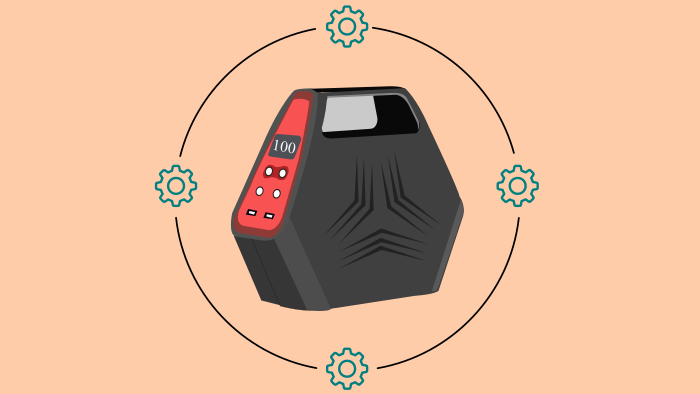If there is a power outage at home due to severe weather or any other reason, a generator is a useful tool for supplying backup power, or if you want to power your appliances at campsites, for your RV trip, for your food truck, or to do DIY projects, a generator is the only tool that comes to mind.
The generator produces currents that are inconsistent due to uneven load and engine rpm (rotation per minute) that vary over time, thus not considered safe for electronics.
Your sensitive electronics that are used at home, camping, during DIY projects, or in a food business may be damaged by these generators.
Here, the question is how to make a generator safe for electronics. Our aim in this article is to provide an answer to this question to the best of our knowledge.
Generators can be made safe by the following methods:
Surge Protector

Power surges from the generator can destroy electronic components attached to it. Surge protectors are devices that detect surge voltage from the generator and send it to the ground wire to prevent damage to the electronics.
Keep these points in mind when choosing the right surge protector for the generator: clamping voltage, Joule rating, and indicator.
Clamping Voltage
Clamping voltage refers to the voltage that triggers the surge protector to transfer the load to the ground. Low clamping voltage provides extra protection and early detection.
Joule Rating
The Joule Rating of a surge protector is the amount of energy it can absorb during its lifetime. Each surge that shifts the surge protector to the ground reduces its joule rating, resulting in the rating becoming less and less. So choose a surge protector that has a high joule rating so that it can provide a long service life.
Indicators
A good surge protector should have a light indicator that indicates its remaining life. This will enable you to replace the damage protector before the next surge occurs or before it has completed its life cycle.
Surge Arrester

A surge arrester is an electric device that protects your house from power surges caused by the grid, lighting, or home generators.
UPS (Uninterruptible Power Supply)

UPS is an electrical operatus and it is an acronym of uninterruptible power supply. The UPS differs from other power systems in that it provides nearly instantaneous power in the event of a power outage. It is sometimes referred to as a continuous power system.
UPSs provide continuous power to shut down devices that are damaged by unexpected power cuts i.e. Computers and data center lose data when not properly shut down. The device is also used to protect sensitive electronics from surges generated by generators or power grids.
The UPS stores the power from the grid, and generator in batteries, super capacitors, or flywheels, and utilizes it if there is an outage or when the load is uneven. The resulting power from UPS is clean and best for electronic equipment.
There are three types of UPS:
Standby UPS
In this type of UPS, power is drawn from the battery when the primary source such as the grid, generator, etc. fails. If there is low voltage or high voltage, the UPS switches to battery DC power and then inverts it into AC power to power connected devices.
A Line Interactive UPS
With this type of ups, minor fluctuations are corrected either at low voltage or high voltage without using battery power. The system automatically smooths the power and delivers clean electricity.
Double Conversion (online) UPS
An inverter is inside this type of UPS. In this type of UPS, incoming AC power is converted to DC power and then inverted back to AC power. The supply of power is very clean and clear without any noise. Pure sine waves are provided by this type of UPS, so you can use electronics safely without any hesitation.
Power Conditioner
It is also known as a line conditioner, or power line conditioner, and it helps to improve the quality of electricity coming into the home and to protect sensitive equipment connected to it. It provides surge protection and noise filtering and may have more than 10 outlets.
It can be used for home and office applications. Sometimes it is also known as a voltage regulator since it regulates both low and high surge voltages. It is also used to remove noise present in current/voltage waves.
Automatic Voltage Regulator
Automatic voltage regulator is built inside the generator that maintains the constant level of voltage throughout its operation for the safety of connected equipment.
AVR is a device that checks the output voltage and compares it with the standard set point, and in case higher voltage is detected, then sends a signal to the generator to control its surges by increasing or decreasing the current flow to the exciter stator, which in turn results in higher or lower voltage in main stator terminals.
Inverter Generator

It is recommended that you purchase an inverter based technology generator if you have not already purchased one and you intend to power sensitive equipment with your generator. They are costly upfront but they will save a lot of bucks in the long run.
With the help of the inverter, the generator converts AC power into DC power, which is then inverted back to AC power. As a result, the current will be a clean and pure sine wave.
Manufacturers of inverter generators claim that their output has less than 3% THD, which is very safe for sensitive equipment like laptops, mobile phones, CPAPs, and many other items.
Final Thoughts
If you already possess a generator without an automatic voltage stabilizer, you should also install a surge protector, surge arrester, line conditioner, or a UPS as per your requirements for extra safety.
If you are going to purchase a generator, then you should purchase one with inverter technology, which is very safe for sensitive electronics.



